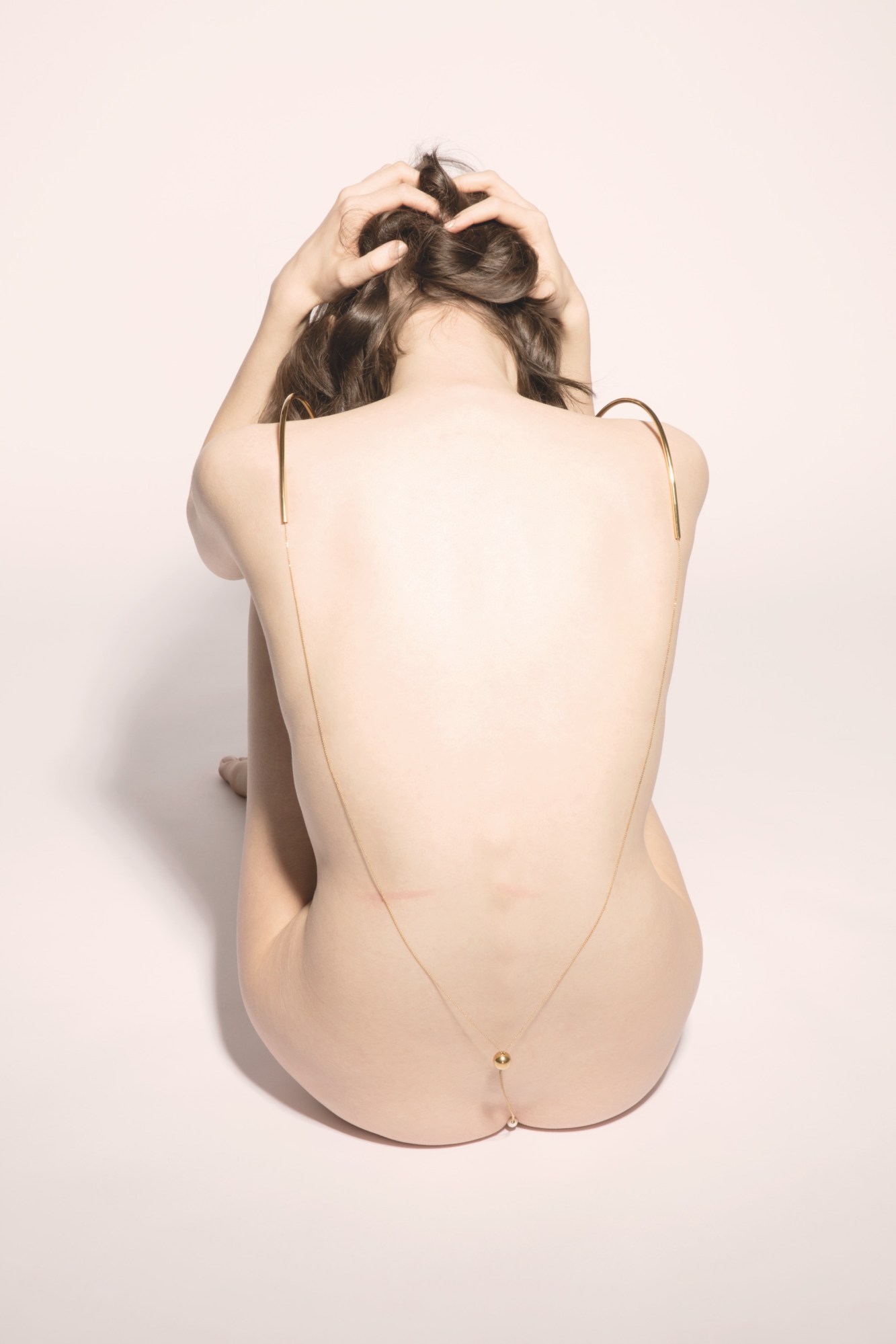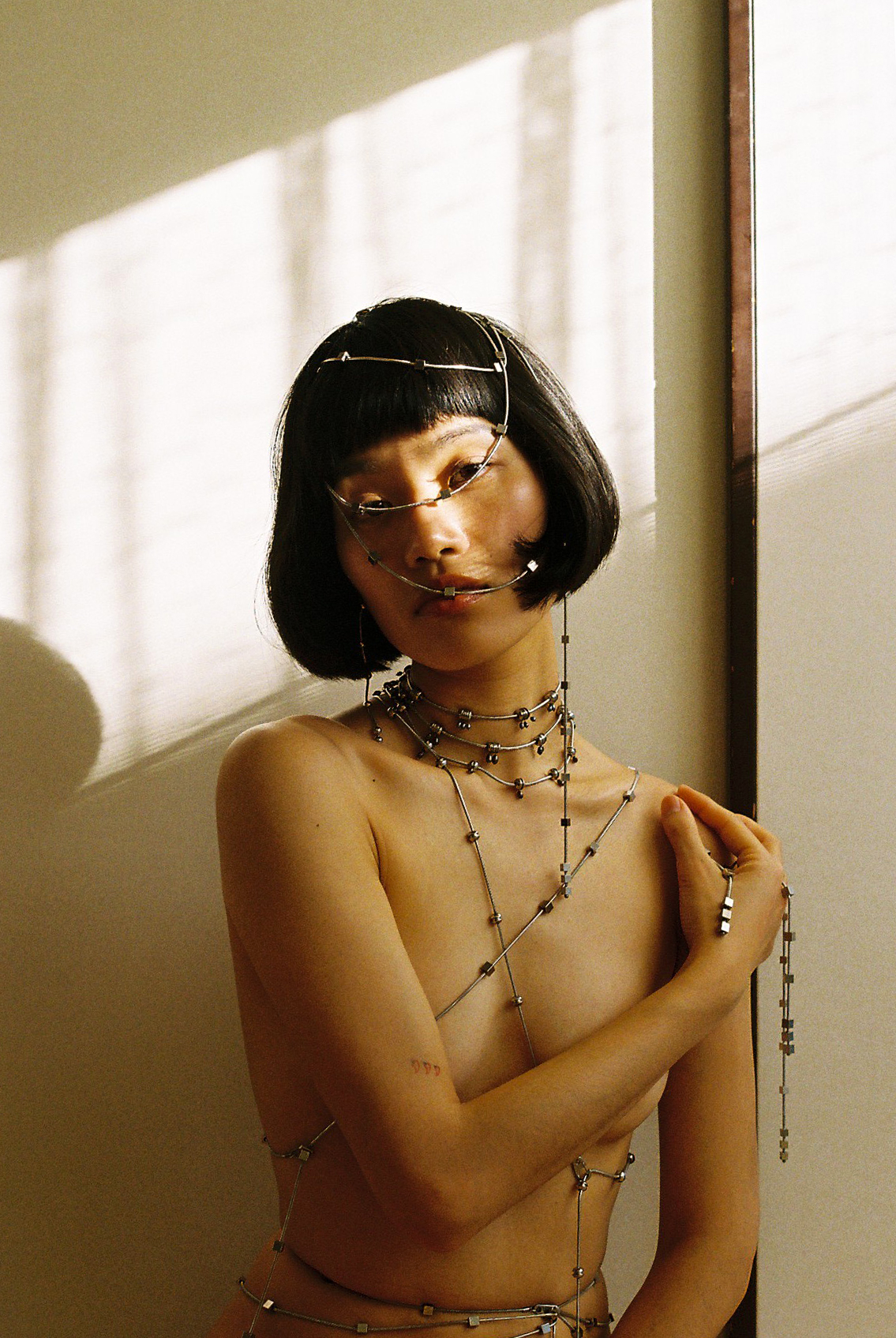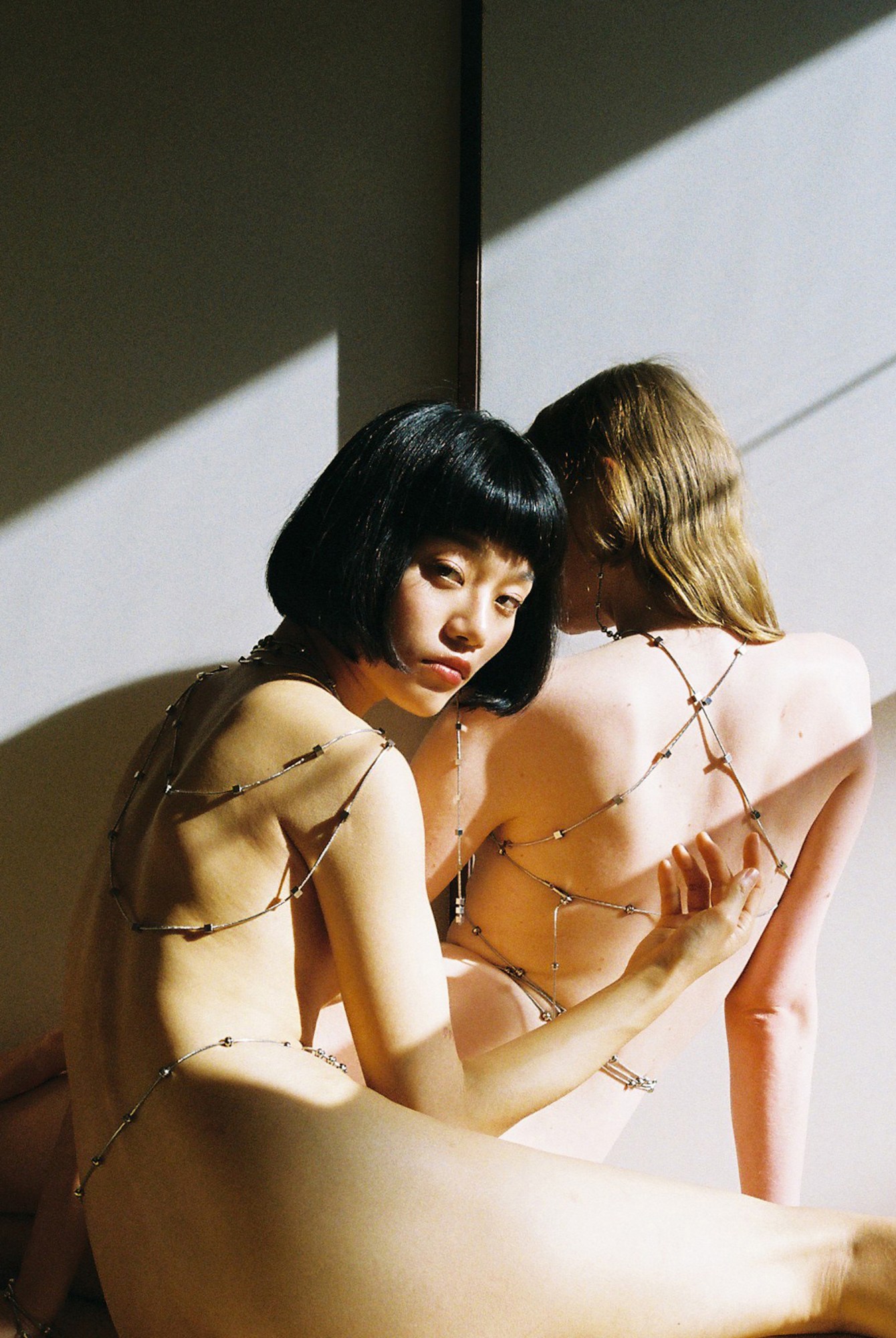By definition, to be naked is to be unclothed. To be parted from our T-shirts, shirts, trousers, dresses and the like. And further, stripped down past our intimates: bras, boxers, stockings and socks. This definition takes into account all the garments — small or larger, inner or outer — that conceal, clothe and protect our bodies. But what about the rest: the earrings, the rings, the jewels with which we adorn ourselves? Can one be considered naked while donning an ear cuff, au naturel wrapped in a body chain? Jeweller Alan Crocetti seems to think so. “Jewellery is that thing that empowers you whether you are dressed or naked,” he tells i-D.
“I was puzzled by traditional jewellery,” says Crocetti, on what spurred him to begin his eponymous label. “How restrictive it tended to be in terms of who could wear what, and all the ‘territory’ left to be explored in the human body.” These uncharted crevices and expanses of skin are the blank canvas upon which Crocetti — and a cohort of up-and-coming jewellers — are creating a new breed of jewellery, reimagining jewellery not as accessory to clothing, but as accessory to nakedness.
Japan-based jewellery designer Marland Backus has similar words. “I think jewellery and clothing are very different,” she says. “In that clothing usually covers the body and hides it, but jewellery adorns it and highlights it.” Her spring/summer 20 jewellery collection does just that. Each design, from “Wrist” (a bracelet with elegant dangling bits) to “Waist” (a belt-like snake chain creation), draws its namesake from the body part it’s meant to adorn rather than the conventional fashion categories (bracelet, belly chain). It’s a move that solidifies the importance of the body to Backus’ design process. “I wanted to make pieces that highlight and mimic the anatomy of the body,” Backus continues. As such, “Arm” traces the forearm in two snake chain strands, like the twinned ulna and radius bones just beneath the surface.
To London-based jeweller and RCA grad Joanne Guiraud, the design process is similarly intimate. “I experiment a lot on my own body,” she admits. “I look at [the body’s] curves and shapes, what I feel should be emphasized or highlighted, and design from these experiments.” To Guiraud, like Crocetti, all body parts equally deserve to be adorned. Take a look at the designer’s massive and intricate body pieces, which link neck to thigh — and everything in between, or her “pinching pieces” globular piercing-less jewels that can be attached on any bit of skin by means of — you guessed it — pinching.

Further, however, Guiraud is interested in the intimate (and most times sensual) relationship between jewellery and the body — and the feelings this relationship can evoke. As its namesake suggests, her RCA graduate collection “Hidden Feelings” explored the sensuality, emotionality and intimacy inherent to the act of wearing jewellery. These themes took shape in Guiraud’s highly unconventional, wear-anywhere body jewellery, including the aforementioned pinching pieces. “In addition to creating a piece that could be worn everywhere on the body without piercing, the concept behind the pinching piece was to explore pain. The intensity of pain will change depending on your sensitivity and where you decided to pinch the jewel,” she says. “It can be quite painful, but then, it depends what you’re looking for,” she adds, her words trailing off suggestively.
Similar are Guiraud’s Tie and Belt pieces, which she describes as her most sensual pieces. “The Belt is inspired by the corset. It’s very bold, tight, and restrictive,” she says, of the piece crafted from metal and hair, to be worn around the waist. “You can pin it underneath your clothes to feel it tickling your skin,” she says. “The Tie piece is the opposite. It’s a delicate piece but with a strong erotic touch. It recalls the bodysuit and if worn on naked skin, the chains and pearls will activate feelings in the most intimate part of your body.”

And in relation to this intimacy, jewellers like Guiraud and Backus are reenvisioning jewellery as highly personal emblem rather than an outward sartorial statement. “The early stage of the “Hidden Feelings” collection was to question the notion of private and public, what you want to show and what you want to keep for yourself,” she explains. “The idea behind the collection was to create pieces that can be worn on top or underneath your clothes.” Guiraud’s signature pinching pieces, or even the Tie and Belt jewels can be worn as a more traditional adornment, or as a secret — a hidden feeling — for the wearer themself.
One of Backus’ favourite SS20 pieces also revels in this individualistic enjoyment. “A piece from the collection that’s special to me is “Shoulder” because it’s really not a part of the body that you associate with jewellery and is not really ever highlighted,” Backus says. “This piece also incorporates the armpit, which is definitely not a part of the body that is normally adorned. But I love the idea of having a little Swarovski crystal in my armpit, even if no one else knows.”

In addition to this intimacy, Backus also designs these naked jewellery pieces to be completely customizable, transformable to suit the wearer’s own personality and proclivities. It makes sense: where else are we more ourselves than when we are naked? Speaking to her new AW20 offering and its accompanying campaign, which features entirely nude models wrapped in the collection’s modular body chains (some up to ten feet in length), she says, “I wanted the collection to be versatile and I wanted people to wear it however they want. I obviously don’t expect anyone to go out wearing nothing but chains, but I think that by presenting the pieces this way it leaves them open to interpretation and to people’s personal styles.”
Finally, we return to Crocetti, a pioneer of this naked jewellery movement, of jewellery as the utmost personal statement. This past month, the designer announced the launch of his latest collection titled “To The Core,” an amalgam of the designer’s signature pieces: the ear cuffs that seem to meld with the body, piercing-less nose rings, subversive-luxe takes on body modification, meditations on the way we interact with jewellery — permanently or not — to define ourselves. Crocetti’s own collection notes describe not only the offering at hand, but also the ethos that the designer has crafted over the course of his career, which “speak[s] to the many individuals who crave armours that help them externalize their true selves.”


